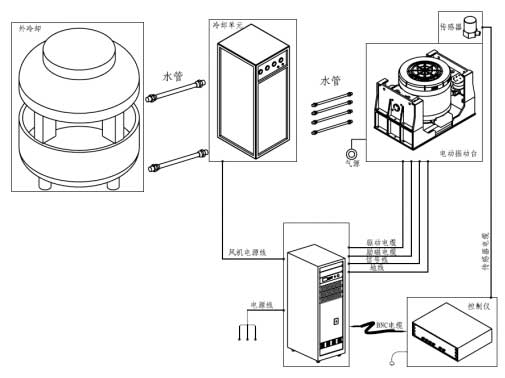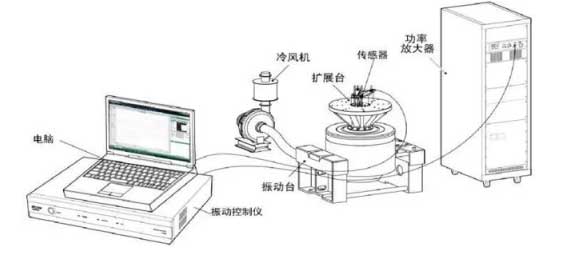It is a common problem that vibration testing table generate a lot of heat during operation. This heat build-up can have a serious impact on the shaking table itself as well as the surrounding environment.
First of all, excessive heat will reduce the efficiency and stability of the vibration testing table. The high temperature environment will accelerate the wear of the internal parts of the vibration shakers and shorten its service life. At the same time, heat accumulation may also lead to the failure and failure of the vibration shakers itself. vibration testing table cooling is mainly divided into two types, water cooling and air cooling, each technology has advantages and disadvantages, therefore, we should carefully weigh the purchase of electromagnetic shaker according to their specific application needs and environmental conditions. Next, let’s take a brief look at the air-cooled shaker and the water cooled shakers.
The work of a water cooled shaker is to pump frozen distilled water into the key components of the electromagnetic shaker to absorb heat and discharge it. Then, the water is recycled through a cooling device. This cooling device can effectively reduce the water temperature, allowing it to circulate and cool throughout the entire vibration shakers. The entire system can operate normally without any additional air circulation.
This water cooling method has significant advantages over traditional air cooling. Water has a larger heat capacity and can more effectively absorb and conduct heat. At the same time, the water cooling system does not rely on external air circulation, so it can better control and maintain the stable operating temperature of the electromagnetic shaker. This method not only reduces the complexity of the cooling system, but also ensures the reliable operation of the vibration shakers under high heat loads.

Therefore, the water cooled shakers is suitable for shock and high-performance vibration testing of very large payloads, such as defense, aerospace, automotive, satellite and other industries
Like forced air systems, water cooled shaker systems have drawbacks. For example, because water cooling systems are more complex, they cost more upfront and require more maintenance. The water cooling system needs to be equipped with special pumps, cooling devices and other auxiliary equipment, compared with the air cooling system, the initial investment is higher, and the installation and commissioning of the overall system also requires more engineering investment.
The core working principle of the air cooled shaker is to use air convection for heat dissipation. In the air cooled shakers, the large blower draws air through the shaker, so that the cooler air takes away the heat. Because the air cooled shaker has no cooling device or cooler, it is simpler and more affordable than the water cooled shaker. They also provide excellent stability and support due to their high torsional and lateral stiffness. These features enable high performance and low distortion levels.
Air cooled shaker is widely used in electronic and electrical, auto parts, battery, communication, packaging and other industries.

The structure of the air-cooled vibration testing table is relatively simple, and there is no complex water cooling system. Because of the simple structure, the manufacturing cost of the air-cooled shaker is usually lower than that of the water-cooled shaker, and the maintenance and repair are more convenient, the air-cooled shaker is suitable for most vibration test environments, and the scope of application is wider.
Defect
We produce large, neutral, small air cooled shaker and water cooled shakers, suitable for various industries, if you want to know our products, please submit the following expression, we will reply you right away!
